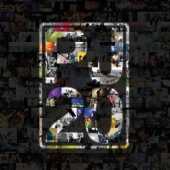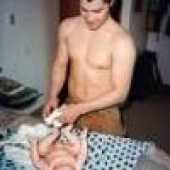The Heineken Keg – Too Much Foam?
Winter Fun for the Whole Family
Crop Circles
1. A magnetic profile mimics the actual design of the crop circle. 2. Traces of metallic, magnetic material are found in the soil, and sometimes implanted in the plant cells. 3. The swirl symmetry is smooth and there are usually few rotations of the spirals in the flattening (implying huge 'boards' used to flatten the plants). 4. Often the floor of the circle features an interweaving of the plants. 5. The circles are extremely large and complex, considering that they have to be created in a night.Skeptics don't generally dispute the above points. They set about trying to demonstrate how humans might have produced the microwaved nodes and metallic deposits. The above five points are not essentially controversial, in terms of whether they occur or not. .............. As you might have surmised by now, I personally don't find it plausible that college students with boards are going out and producing the best of these circles in four hours of darkness, and then spraying the soil with magnetic shavings. Many of these circles would require huge teams of "flatteners" working with cranes and lights and so forth, and this would disturb the neighbors who are typically located fairly proximate to the circles. Also, for a group of college students :- ) to produce spiral circles, they need to plot a number of points around the circumference and then survey the area. Early on, it required only 3- or 4-point geometry to produce the simple circles, but since then the stakes have been raised. Some of the circles require 30-point geometry to design (!), and many are larger than football fields. Many of the designs show a smoothness of symmetry, and complexity of geometry, that can't be done in a few hours with surveying equipment and/or compass tethers. . === So, Who Gets the Blame? === If you're satisified by the idea that amateur hoaxers were able to produce 100% of these circles, you have no cognitive dissonance here. ........... Personally, I (jemanji) do not believe that intelligent life exists in the Milky Way outside of earth. This is not because I'm biased against the idea of aliens. It is because I find Fermi's Paradox completely convincing. However, if there were one UFO argument that I would find credible, it would be the crop-circle argument. Reports of dancing lights, 8 meters above the ground, creating these circles, could feasibly be attributed to civilizations a million years more advanced than ours. In Arthur C. Clarke's "Childhood's End," he put forth the idea that when aliens do decide to integrate into our societies, they will do so very carefully, in slow stages, "warning" us first, so as to give us the chance to get used to them. Carl Sagan's "Contact" echoes this theme. Again, this doesn't do it for me, because Enrico Fermi proved convincingly that if intelligent life were extant in the Milky Way, it would have colonized the galaxy long, long ago. .................... I would not totally rule out the notion of spiritual beings intervening in our society, but do not believe that they would use electromagnetism to create circles. :- ) .................... The idea that high-technology governmental devices create these is farfetched -- but for me, it's less farfetched than any of the alternatives. When you have ruled out the impossible, Mr. Spock, then whatever is left -- however improbable -- must be true. Well, maybe not. ................... For me, crop circles represent an entertaining cognitive dissonance: they can't be happening, and yet they are. For me, crop circles are the number-one example of cognitive dissonance on the planet. I have no idea how they occur. They're impossible. Cheers, jemanji ................ image: http://www.futurehi.net/images/cropcircle.jpg
Home Rental Prices Lower Than Ever Amid Struggling Economy
Kosher Wine
When I was a kid, kosher wine pretty much meant the standard non-Pesach corn syrupy-sweet Manischewitz. In California, friends celebrating Passover (which requires four glasses of wine to be consumed during the course of the seder) introduced me to the wide variety of excellent, and non-sulfide containing, kosher wines. I discovered not only excellent Israeli kosher wines, but California kosher wines from Herzog Cellars and others. California wineries produce a wide variety of white and red wines (traditionally, seders usually involve red wines, but Californians may be less orthodox in that respect).
I wondered if Washington produced kosher wines, and set about to find out. But, I hear you ask, what does it mean for a wine to be kosher?
In order for a wine produced outside of Israel (where the rules are much stricter) to be kosher all the production of the wine after the grapes are picked must involve handling only by sabbath-keeping Jews under the direction of a rabbi or Kashrut trained supervisor.
No work, at all, may be done on the sabbath. That means from sunset to sunset, Friday to Saturday.
Any barrels, or storage tanks or wine-making equipment must be kosher. There must be no contamination at all from non-kosher food products. No departure however minor is acceptable. This makes strict vegetarians very happy.
The exception to these rules is meshuval wine, that is, wine that is been pasteurized, or brought to boiling and cooled. Modern winemakers use flash pasteurization, bringing the wine to the boiling point within seconds and then "flash" cooling it down. Experts say this method doesn't adversely affect the wine at all.
I should point out that kosher for Passover involves a separate set of requirements, because of the necessity for purity. You can read more about kosher wine production here, here, and here.
Unfortunately, I have only been able to locate one kosher wine producing winery in Washington: Pomum Cellars winery in Woodinville. You can see a video review of two of their kosher wines, Pomum Cellars' 2005 Shya Red and Pomom Cellars' 2005 Syra. If you're still curios about kosher wine, I recommend the Kosher Wine Review, which includes lists by country of production as well as a list of meshuval wines (particularly useful in terms of catering, since the wine is still deemed kosher even if served by non Jews). Tree of Life Judaicia and Books in Seattle sells kosher wine, but none from Washington. I note that online purveyor Kosher Wine Online seems to offer kosher wine from every conceivable location except the Pacific Northwest, but I'm hoping . . .
To Rent or to Own: The Pros & Cons
Sample Size 201 - Chris Shelton
vs LHP: 230 PA, 300/413/574 vs RHP: 825 PA, 297/387/459The minors data are not a "sample" either; this is a collection of observations / evidence, and not conclusive evidence. But what would be considered a "sample" is the set of 9,000 :- ) right-hand ML hitters who have run normal platoon splits in the past, and Shelton's minors performances can be said to be "consistent with" these legitimate leaguewide "samples." Shelton's early reverse-platoon splits in the majors are interesting. The fact that his OPS is (lightly) -100 vs LHP, across a half-season's 313 PA's, isn't anything that I wouldn't expect just from random fluctuation alone (correct me if you disagree, Kelly or Matt, LOL.) It does suggest to me (not scientifically; just intuitively) that ML lefthand pitchers gave Shelton some slight adjustment problems, in his first couple of trips around the league, which are (logically) about to disappear. ........... Shelton's dropoff against LHP's is pretty light, and it didn't occur in many AB's. It's nothing to worry about. As a #10 hitter, the guy's a pretty exciting add. Let's hope he gets those 9 dings in 13 games for us :- ) Cheers, jemanji ................... http://www.psi-software.com/Images/Car_Assembly_Line.bmp


